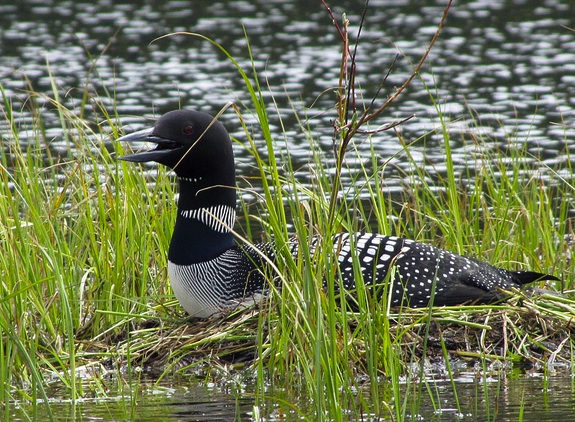One Confused Loon Spent 48 Days Trying to Hatch Rocks
In July 2011, something strange was going on with one of the loons at a Massachusetts sanctuary

Photo: Juneau1935
Each year, around 11 pairs of nesting loons gather in Massachusetts, at the Quabbin reservoir, to hatch a new brood of chicks. This is the largest group of nesting loons in southern New England, and since 1975, the Massachusetts Department of Conservation and Recreation has tirelessly monitored the birds. Usually, the loons nest for about 28 days. ScienceNOW reports:
The striking black-and-white waterbirds, known for their mournful calls, like to lay their eggs on floating piles of rotting plants. To aid the Quabbin loons, local conservationists have built floating platforms piled high with dirt and vegetation.
But in July 2011, something peculiar was going on with one of the birds. It had been sitting on a nest for a full 43 days. Worried that the eggs may be infertile or had died, the research team moved in to have a look.
When they approached the nest, the loon “sat tight and lowered its neck,” the researchers write, though they originally shooed it off of its brood. Instead of finding eggs, they were surprised to discover rocks, “brownish in color, roughly similar to one another in size and shape, and smaller than a Common Loon egg.” The rocks were warm from the loon’s faithful sitting. ScienceNOW continues:
The stones were probably mixed in with the material that had been dumped on the platform, they speculate. And the loon, which appeared to be a young bird, may have been engaged in “mock” nesting, which can help novice parents develop nesting skills.
Birds are sometimes known to incubate inanimate non-egg objects: ScienceShot writes that there have been cases of birds nesting a bunch of pine cones or pebbles. These cases are rare, but they happen. Once, for instance, a long-billed dowitcher was found nesting a clutch composed entirely of mammalian bones in 2012. In that Ardea paper, the researchers observed:
The reasons for this perplexing behavior are unknown: we suspect the bird gathered the bones with-in the surrounding area, which contained remnants of amammalian skeleton.
The bird’s nest contained no eggs, the bones did not remotely resemble eggs and there were no signs of humans tampering with the nest. The researchers were stumped.
It remains unclear why the dowitcher incubated this unusual clutch, and why it used an atypical nest and habitat considering more suitable nesting habitat was available. Whereas there are plausible explanations for incubation of non-egg objects resembling the bird’s egg in shape or size, or for incubation of foreign objects along with real eggs, incubation of a ‘clutch’ composed solely of non-egg objects that do not even resemble the actual eggs of the species remains puzzling.
More from Smithsonian.com:
/https://tf-cmsv2-smithsonianmag-media.s3.amazonaws.com/accounts/headshot/Rachel-Nuwer-240.jpg)
/https://tf-cmsv2-smithsonianmag-media.s3.amazonaws.com/accounts/headshot/Rachel-Nuwer-240.jpg)